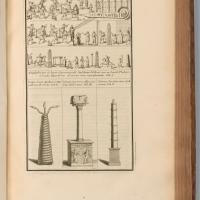Kıztaşı
Prefect Tatianus in honor of Emperor Marcian (450–57)
ca.. 450-452 CE
Description
History
Though documented and studied by various European travelers, the Column of Marcian remains one of the least-discussed monuments in the Late Antique fabric of Constantinople.1 This relative neglect by modern scholars is partly due to the complete lack of references to the monument’s existence in Byzantine texts. The inscription on the northern side of the pedestal, Principis Hanc Statuam Marciani - Cerne Forumque – Praefectus Vovit Quod Tatianus – Opus, records that the Column was erected by the prefect of Constantinople, Tatianus, in honor of the reigning emperor Marcian (450–57) probably around 450-52.2 The Column is situated on the fourth hill of the city and may have stood at the center of an unidentified Forum of Marcian, even though such a forum is also not mentioned in the sources.3 The first witness to the Column’s existence was Petrus Gyllius (1544–50), who mentions it only in passing, while the first detailed drawings were made by Jacob Spon and George Wheler during their journey in the Ottoman Empire around 1675/6.4 In the Ottoman period, the Column became known as Kıztaşı (stone of the girls) due to the relief decoration with two Nike figures on the pedestal.5
Architectural Features
The 17 meter high Column consists of a marble pedestal, most likely of Prokonnesian origin, that rests on a three-stepped platform that is found partially below the modern-day ground level. Above the decorated pedestal rises the column itself with a shaft of gray granite (of 8,70 meters) and a Corinthian capital that is surmounted by a large block, the corners of which are adorned with four eagles. A statue of Marcian must have stood atop the column but has disappeared without a trace or a representation.6 The east side of the pedestal bears a carved Christogram within a laurel wreath signifying the emperor’s triumph in the name of Christ. Travel accounts report that the same motif was repeated on the west and south sides but those have since deteriorated.7 Two Nike figures (Victories) dressed in peploi and holding a shield are found on the north side below the dedicatory inscription.8 The letters were originally filled with some kind of metal, most likely bronze, but now only the incisions survive.9 Two ribbons are hanging from the now heavily damaged shield. The winged Nike on the left survives in relatively good condition whereas the one on the right is almost completely lost. Marble fragments originating from the stepped platform can still be seen on the ground at the foot of the monument.10
History of Conservation and Restoration Work
Over the centuries, the Column of Marcian has suffered from several fires and earthquakes, which have severely altered its original appearance, especially of the relief work.11 In the early twentieth century, rings made of iron were probably added to stabilize the column’s shaft after damages by earthquake and fire in 1894 and 1908 respectively.12 Further, yet limited, repair work was carried out in the 1970s following serious risks of complete collapse. After a major earthquake in 1999, conservation and restoration activities were resumed under the responsibility of the Istanbul Metropolitan Municipality in 2005.13 The entire monument was equipped with rings of stainless steel and clamps that would prevent severe corrosion. However, Arzu Erdem and Rabia Özakın have noted that various professional issues eventually halted the cooperation between the Istanbul Metropolitan Municipality and the Center for Preservation and Conservation and thus resulted in a rather “hasty” and “patchy” restoration of the Column.14
- 1. Pococke 1755: 194; Salzenberg 1854: 34-36; Ebersolt 1909: 1-4. For a brief report on the state of the monument in the mid-twentieth century, see Mamboury 1951: 441. For a detailed description of the column and its history, see Kollwitz 1941: 69-76; Janin 1964: 84-5; Müller-Wiener 1977: 54-5, with prior bibliography.
- 2. On the inscription see Corpus Inscriptionum Latinarum III/1: 738. See also, Mango 1951: 62, and most recently Bauer 1996: 215, both with commentary and corrections of the previous readings.
- 3. On this hypothesis, see Mango 1985: 46; Bauer 1996: 214, who locate the Forum of Marcian midway between the Capitolium and the church of the Holy Apostles (the site of Fatih Camii).
- 4. Gyllius 4, 8; translation in Byrd 2008: 200. See also, Wheler 1682: 191, who discovered the Column in a private garden.
- 5. Another, less likely, scenario sees the same name to be associated with another column that was allegedly used in the construction of the Süleymaniye Mosque, see Janin 1964: 85.
- 6. Mango 1990: 46; Bauer 1996: 213.
- 7. Kollwitz 1941: 73-6.
- 8. This image occurs frequently on ceremonial coins of the Late Roman period, see Kollwitz 1941: 71, who also traces the iconographic motif on carved marble relief.
- 9. Kollwitz 1941: 69.
- 10. Ebersolt 1909: 1-4, also identified pieces from the capital and the uppermost block.
- 11. For a detailed review of the various projects of restoration, see Erdem and Özakın 2008: 1167-73, esp. 1170-73.
- 12. For a discussion of these repair works, see Erdem and Özakın 2008: 1170.
- 13. For aims and results, see Erdem and Özakın 2008: 1171-73.
- 14. Indicative of the unfortunate of the situation is the conclusion of the architects’ report: “As a conclusion, the last restoration works on the Column of Marcian, one of Istanbul’s oldest works, were not at the level that the monument deserved because they were not carried out under the supervision of expert people and organizations, who had accumulated knowledge on this subject and experience.” See Erdem and Özakın 2008: 1173.
Map Location
Bibliography
Primary Sources
Corpus inscriptionum latinarum, consilio et auctoritate Academiae litterarum regiae borussicae editum (Berlin, 1862-).
Gyllius in Banduri, A. (ed.) 1711. Imperium Orientale sive antiquitates Constantinopolitanae, Paris. Translation in Byrd, K. 2008. Pierre Gilles' Constantinople : a modern English translation with commentary, New York.
Secondary Sources
Bauer, A. 1996. Stadt, Platz und Denkmal in der Spätantike. Untersuchungen zur Ausstattung des öffentlichen Raums in den spätantiken Städten Rom, Konstantinopel und Ephesos, Mainz.
Ebersolt, J. 1909. “Une mission à Constantinople 1907-1908,” Revue Archéologique 4 ser. 14, 1-14.
Erdem, A. and Özakın, R. 2008. “The column of Marcian/Kıztaşı and an evaluation of its restorations,” in D'Ayala, D. and Fodde, E. (eds.), Structural Analysis of Historic Construction: Preserving Safety and Significance, Two Volume Set Proceedings of the VI International Conference on Structural Analysis of Historic Construction, London.
Janin, R. 1964. Constantinople byzantine : dévelopment urbain et répertoire topographique, Paris.
Kollwitz, J. 1941. Oströmische Plastik der theodosianischen Zeit, mit einem Beitrag von P. Schazmann, Berlin.
Mamboury, E. 1951. “Les fouilles Byzantine à Istanbul et ses environs et les trouvailles archéologiques faites au cours de constructions au de travaux officials et privés depuis 1936,” Byzantion 21, 425-59
Mango, C. 1951. “The Byzantine inscriptions of Constantinople,” American Journal of Archaeology 55, 1-62.
Mango, C. 1985. Le développement urbain de Constantinople (IVe -VIIe siècles), Paris.
Müller-Wiener, W. 1977. Bildlexikon zur Topographie Istanbuls : Byzantion, Konstantinupolis, Istanbul bis zum Beginn d. 17. Jh., Tübingen.
Pococke, R. 1745. A Description of the East, and Some Other Countries. Vol. II. Part II Observations on the Islands of the Archipelago, Asia Minor, Thrace, Greece, and Some Other Parts of Europe, London.
Salzenberg, W. 1854. Alt-christliche Baudenkmale con Constantinopel vom V. bis XII. Jahrhundert ... aufgenommen und historisch erläutert von W. Salzenberg. Im Anhange des Silentiarins Paulus Beschreibung der heiligen Sophia und des Ambon, metrisch übersetzt und mit Anmerkungen versehen con Dr. C. W. Kortüm, Berlin.
Wheler, G. 1682. A Journey into Greece in company of Dr Spon of Lyons in six books containing I. A voyage from Venice to Constantinople, II. An account of Constantinople and the adjacent places, III. A voyage through the Lesser Asia, IV. A voyage from Zant through several parts of Greece to Athens, V. An account of Athens, VI. Several journeys from Athens, into Attica, Corinth, Boeotia, &c.: with variety of sculptures, London.

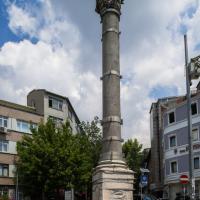

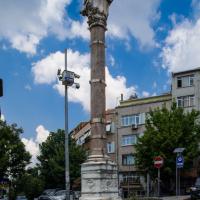
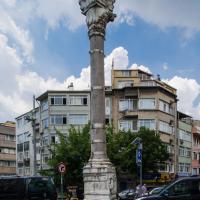
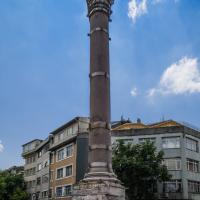
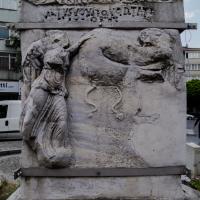
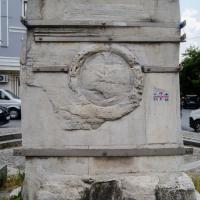
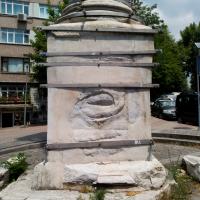

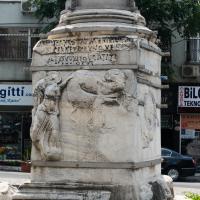
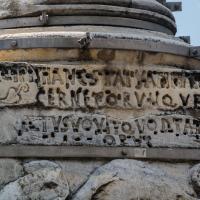
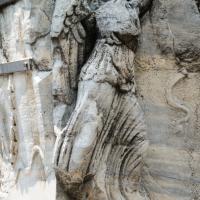
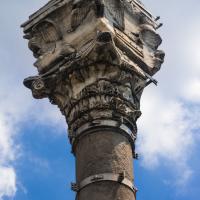
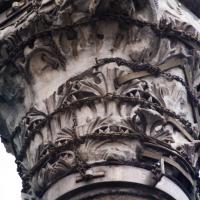
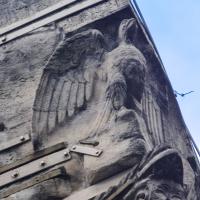
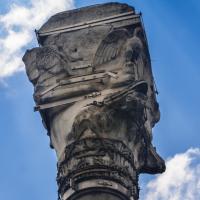
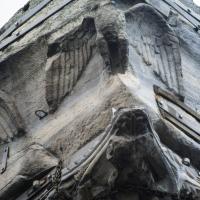
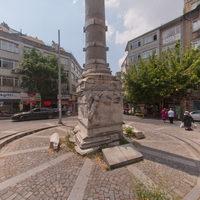

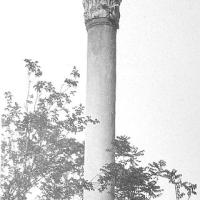

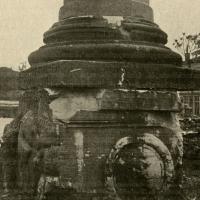

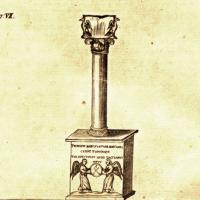
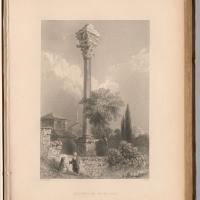
![Alt-christliche Baudenkmale con Constantinopel vom V. bis XII. Jahrhundert ... - BI. I. Baureste der Älteren Zeit [Buildings of the Past]. Alt-christliche Baudenkmale con Constantinopel vom V. bis XII. Jahrhundert ... - BI. I. Baureste der Älteren Zeit [Buildings of the Past].](/sites/default/files/styles/medium_crop/public/media-thumbnails/3/4/1700470005.jpg?itok=D1XrdqOx)
